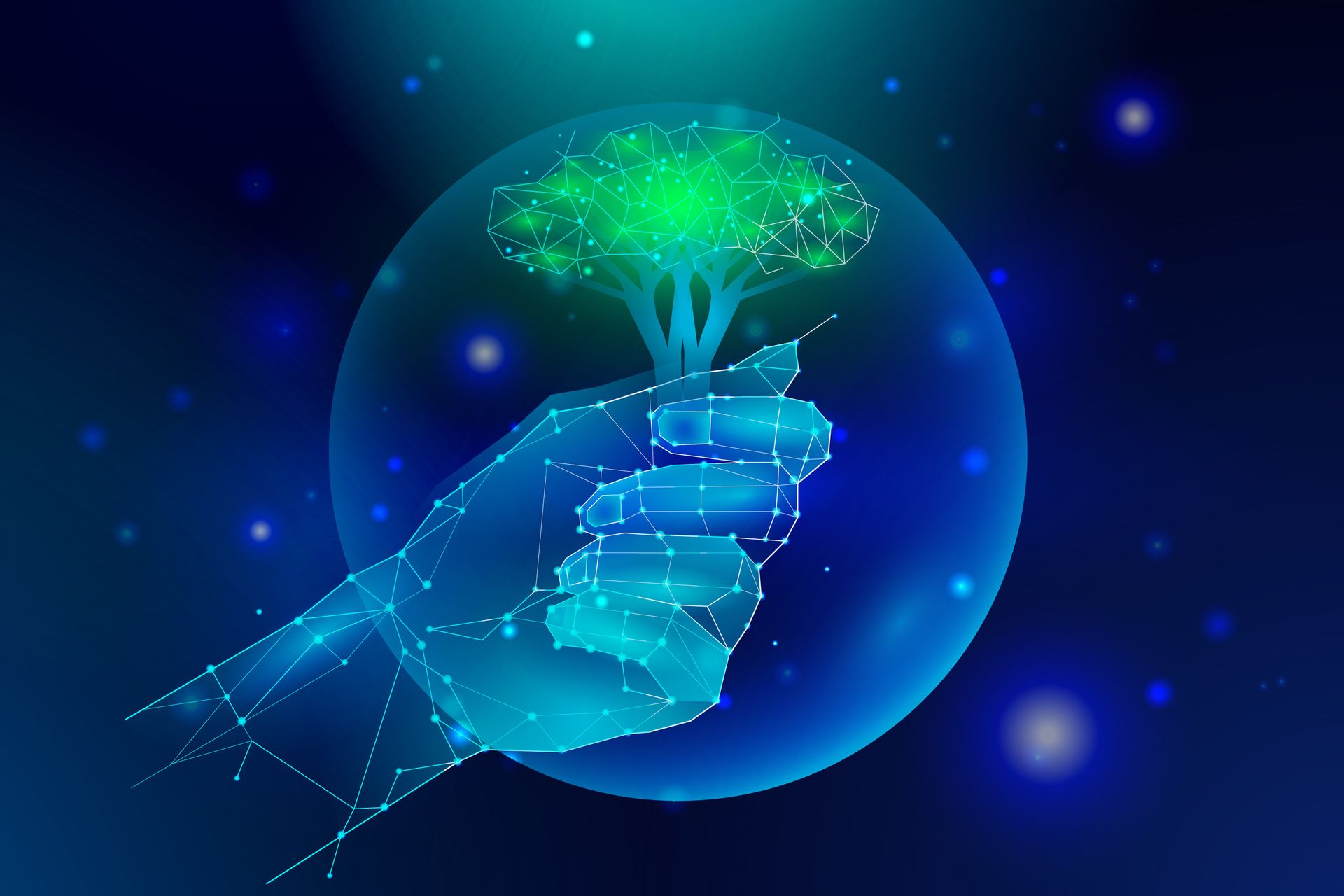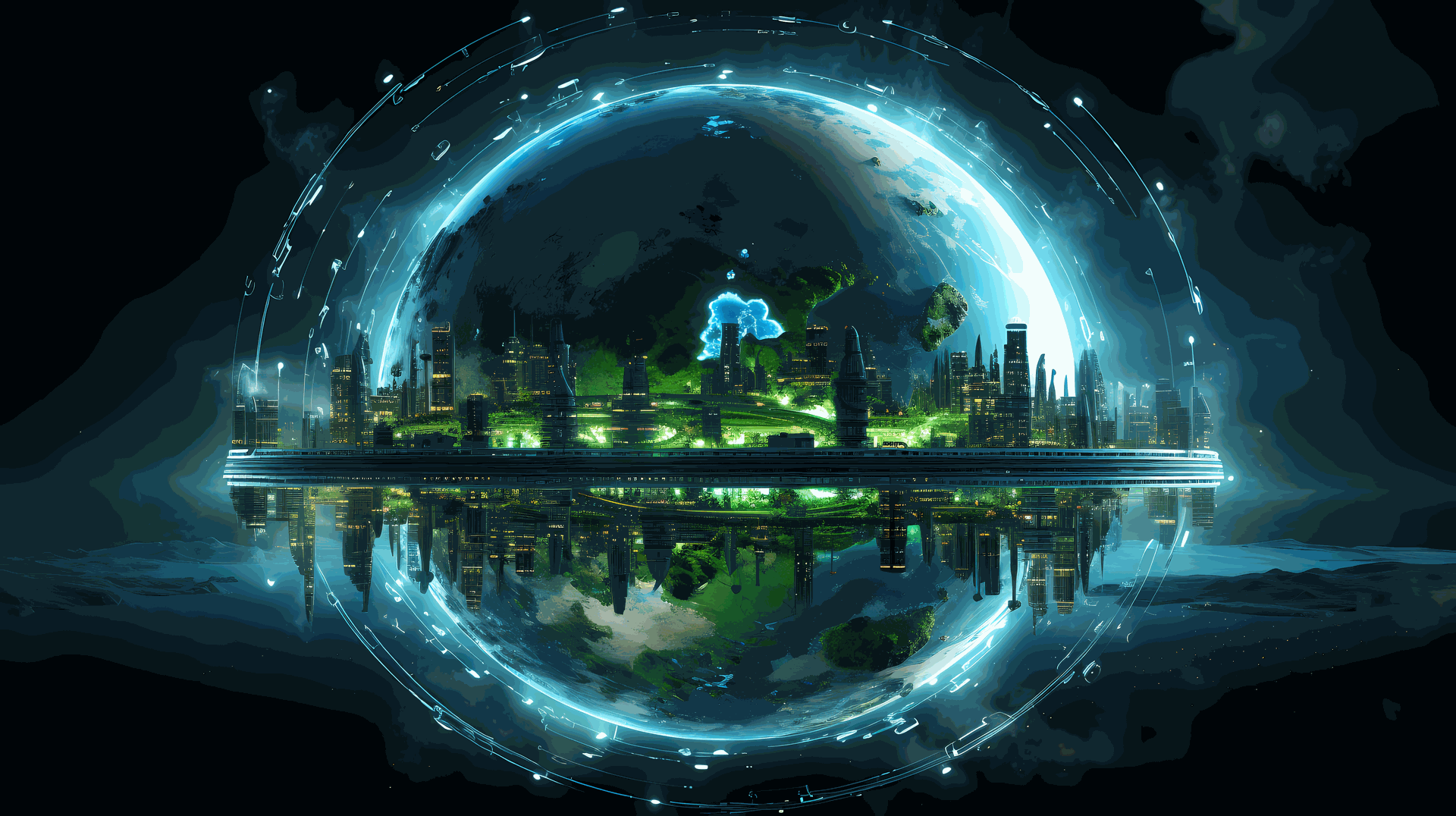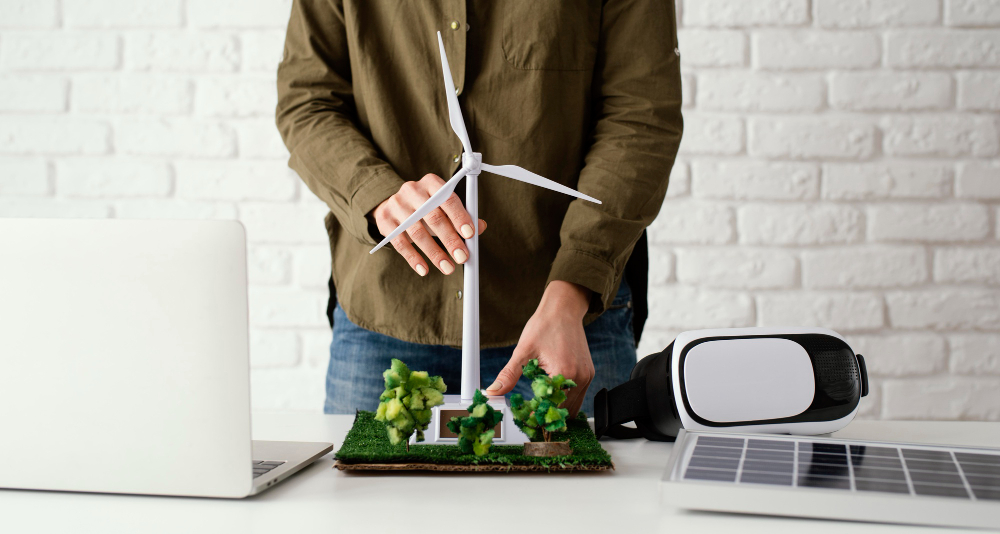Introduction
General Background of Climate Change Problems
Climate change is one of the most serious issues in the world today. Temperatures are slowly increasing; extreme weather events, melting ice-caps, and loss in biodiversity are just a few indications that suggest the rate at which the acceleration of climate change in the present times is faster than ever known before.
This will be 1.1 degrees of global warming already achieved by human activity above the pre-industrial levels; unless control is taken upon greenhouse gas emissions, the planet faces additional 1.5 degrees of global warming around 2030-2052.
It has been clear that climatic change is fundamental, and the scientific and policy-making communities are making urgent demands on issues relating to lowering carbon emissions, protecting the ecosystems, and the ultimate solution that would be viable for the future generations.

Role of AI in Sustainability
It is an area of science that can process huge datasets, and this area can actually identify patterns. This is why AI is a very promising area in increasing efforts toward sustainability.
This is because AI may comprise techniques that analyze data on the environment, optimization of energy use, support to sustainable agricultural practices, improvement of resource management applied by individuals, governments, and industries to make wise decisions to avoid or mitigate the worst effects of climate change, hence AI becomes a strong fight against climate change.
Article Justification: Moving Towards Sustainable Solutions with AI
This article will consider how AI and climate resilience is driving solutions sustainably as well as discussing and likely reducing environmental impacts dramatically.
The more we reflect over the role of AI concerning the battle of climate change both its opportunities and challenges require identification, so that it can make clear the importance of various insights which are available related to making AI contribute more towards sustainability.
Understanding AI and Its Applications
What is Artificial Intelligence?
It is said that Artificial Intelligence refers to the development of machines capable of performing functions normally required of humans. In an AI system, a wide range of machine learning algorithms, deep learning, and analytics in big data are used for analysis, pattern recognition, and prediction.
For instance, machine learning makes systems learn through experience based on patterns in the data. Deep learning allows the system to easily identify complex patterns with as little human intervention as necessary. This means that, as an area, AI is perfectly suited to apply to sustainability as it could learn the environmental trend after a long time.

Applications of AI Toward Sustainability
AI involvement toward sustainability revolves mainly around being able to examine data sets and establish trends. Actual applications include:
- Environmental Monitoring and Data Analysis: AI algorithms process vast amounts of environmental data, picking out patterns in areas such as air quality, water levels, and deforestation rates.
- Smart Grid Management and Energy Efficiency: AI can predict electricity demand, move power plants, manage energy storage, and optimize the distribution of renewable energy sources.
- Sustainability practices in agriculture: AI Sensors Crop Health Monitoring Yield forecasting Assessment of soil quality Assisted sustainable farming techniques that also reduced water and chemical usage.
AI Innovation solutions to Climate Change
Reducing Carbon Emission
AI is also influencing industries by providing technologies meant to optimize energy utilization to subsequently reduce greenhouse gas emissions on a scale that has traditionally characterized more energy-intensive business sectors.
- Reducing Energy Consumption in Industrial Plants: The AI-based systems monitor real time usage of energy and locations where it can be conserved, predict the required maintenance, and optimize the process of factories to reduce emission.
- Carbon Capture and Storage Innovations: Artificial intelligence contributes to proper development of carbon dioxide capture techniques because of predictions about best techniques that could be adopted in a given environment hence increasing the feasibility and effectiveness of these projects.

Maximization of Renewable Energy Use
Since renewable sources of energy would need to reach its complete potential, it needs to be integrated with the normal power grid.
- Prediction of Renewable Source Generation through AI: It refers to accurate weather-based as well as time-series forecasts through AI, so systems can predict the level of output from renewable sources better, hence giving better possibilities for planning and grid-balancing.
- Smart Grids and Demand Response: AI-driven smart grids have the facility to shift their energy generation and supply on the real-time basis based on what is in actual demand as opposed to merely relying upon the base-line supply.
Resource management improvement
Resources play a significant role in achieving ambitious goals of sustainable development. AI offers solutions to tackle vital resources like water and waste.
- AI in Water Management and Conservation: AI-based technologies can track water usage, predict droughts, and optimize irrigation practices, thus saving much water in agricultural and urban areas.
- Optimizing waste management and recycling: AI sort waste, identify recyclable material, and make recycling easier so that more materials are recycled rather than going to the landfill.
Case Studies of AI Impacting Sustainability
- DeepMind at Google and Energy Efficiency: The AI arm of Google, DeepMind, has been working on the development of algorithms that maximize cooling in its data centers and hence reduce energy usage by 40% in some facilities. It is now a model being applied all over the world for improved efficiency across various industries.
- Microsoft: AI-Powered Carbon Capture: Microsoft uses AI to watch and model carbon capture technology to ensure that the firm meets its goal of being carbon negative by 2030.
Lessons Learning
Sustainability requires multidisciplinary teamwork because accessing proper data is challenging, and AI technology was quite expensive at first.
Some of the difficulties are that it is tough to get accurate environmental data, and the AI model takes a lot of energy.
The bottom line for applying AI to sustainability is that it requires interdisciplinary knowledge and teamwork by governments, corporations, and environmental organizations.
Challenges and Limitations of AI in Sustainability
Data Availability and Quality
The quality of information fed will accurately describe the environment through data by the AI.
However, coming by quality environmental data at real time in developing countries is a daunting task.
Data Collection Strategies: Much investment into the hardware equipment used to monitor environmental areas such as IoT sensors should increase quality and accessibility in data availability.
Ethical Considerations
AI on sustainable issues: benefits ought to be brought to realisation with such issues. AI cannot result in job displacements based on the proposed solutions.
- Fairness and Inclusive: One needs to give AI-based solutions for such communities type, not only for any elite type, so that the whole process becomes inclusive as well as sustainable over time.
- Employment Displacement in the form of Job-Automation. For that latter, the reskilling program would have to be constituted for the very lot that would face displacement in jobs because of the said change.
Technical and Resource-related bottlenecks

Artificial models are typically energy-intensive and expensive to train and maintain.
- Interdisciplinary Co-operation: There is coordination needed among technologists, environmental scientists, and politicians to take full advantage of AI.
- Role of AI in the Promotion of Circular Economy Activities: AI can help streamline the recycling process and convert waste products natural resources into useful products to enhance the circular economy.
Future of AI in Climate Change
Since AI is still in its developmental stage, the role in climate adaptation work and change mitigation will also expand with the help of governments, non-profits, and the private sector.
Artificial intelligence can also make recycling processes more energy efficient appliances and the waste materials more useful to the circular economy.
Predictions for the Role AI Could Play in Climate Action
With time, it's sure that the ability of AI to impact the global in addressing climate change will increase even further as more governments, NGOs, and private enterprise tie up together.
Best Practices in Implementing AI in Sustainability Initiatives
A defined strategy in which AI projects are aligned to achieve the achievement of environmental goals will increase the effectiveness of such projects and allow it to have maximum impact.
- Align AI Initiatives with Environmental Goals: Companies must ensure that their AI initiatives directly complement the commitments they make for achieving the environment, which includes reducing emissions, reduction and resource saving.
- Engaging Stakeholders and Communities : Involving local communities and diverse stakeholders increases the chances of having AI solutions that are inclusive and more suited to fulfilling community needs.
Building Capacity and Expertise
Education providing guidance and training are essential in equipping the professionals with the skills needed for implementing and advancing AI towards sustainability and sustainable future.
AI and Sustainability Professionals: There is a need for adequately learned labor force who will be educated about both AI and sustainability.
In summary, what we think
Key Take-aways
AI has given out so much promise in working to help the society solve the global dilemma of climate change, above all, through reduction emission levels, optimizing resource, and utilization, as well as integration of renewable source of energy.
Data, resources, and ethical-related challenges have to be undertaken to fully benefit on its sustainability side.
Final Thoughts on AI's Role in Combating Climate Change
A very great boon of AI in the fight against climate change is how potent this tool is when utilized in a sustainable manner in the right responsible yet inclusive manners.
And when done properly, with considered strategy, ethical approach, and cross-industry partnership, AI can help contribute to sustainability and protect our environmental assets.
Call to Action: How to Promote Synergy for Sustainable Solutions on AI
In order to overcome climate change, it has to be a collective approach and AI can play pretty well in this. I
n this respect, governments countries, private sectors, NGOs, and individuals must work in tandem with each other on implementing these AI-driven sustainability and adaptation initiatives to drive us toward a more sustainable and resilient future.